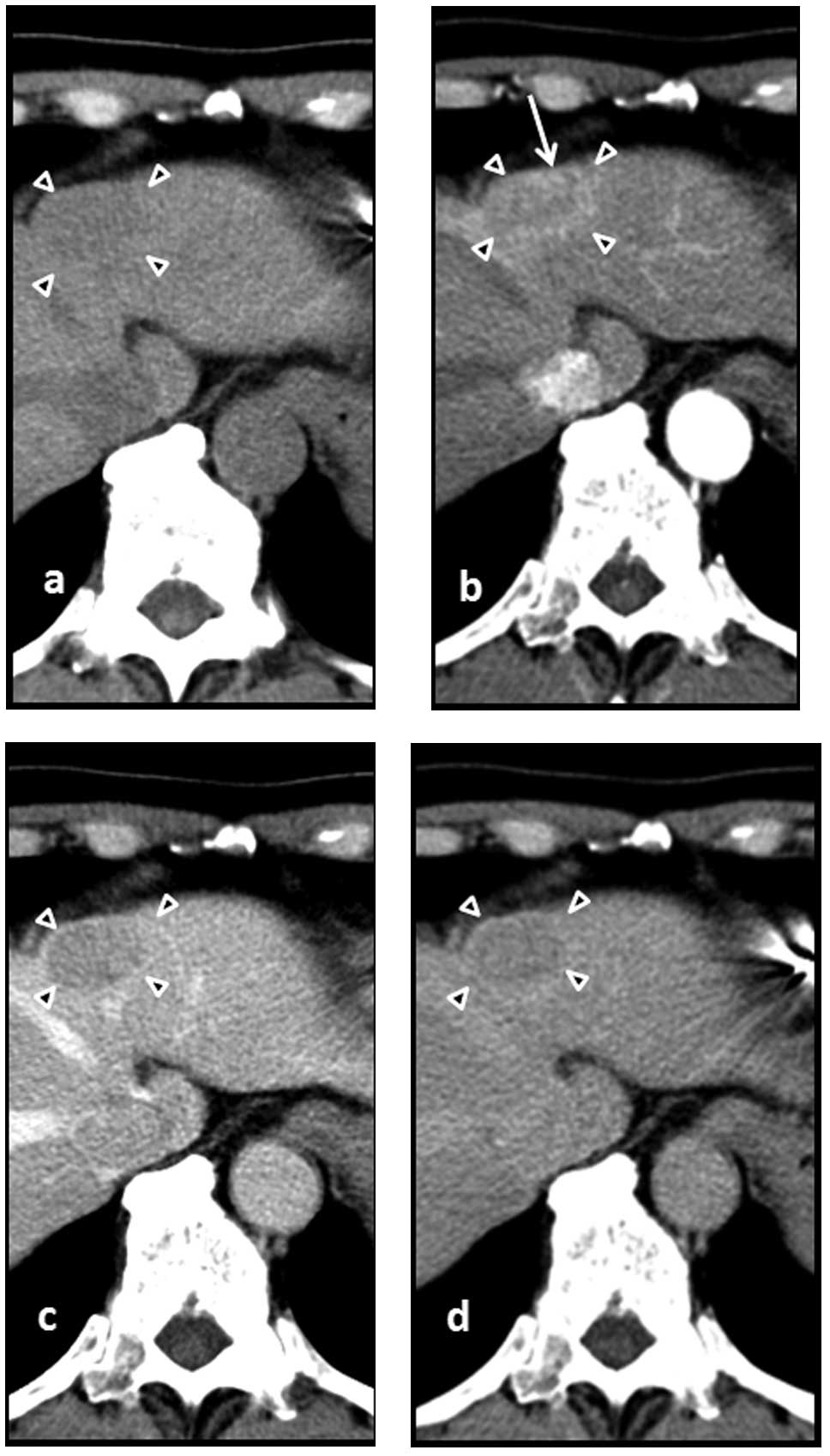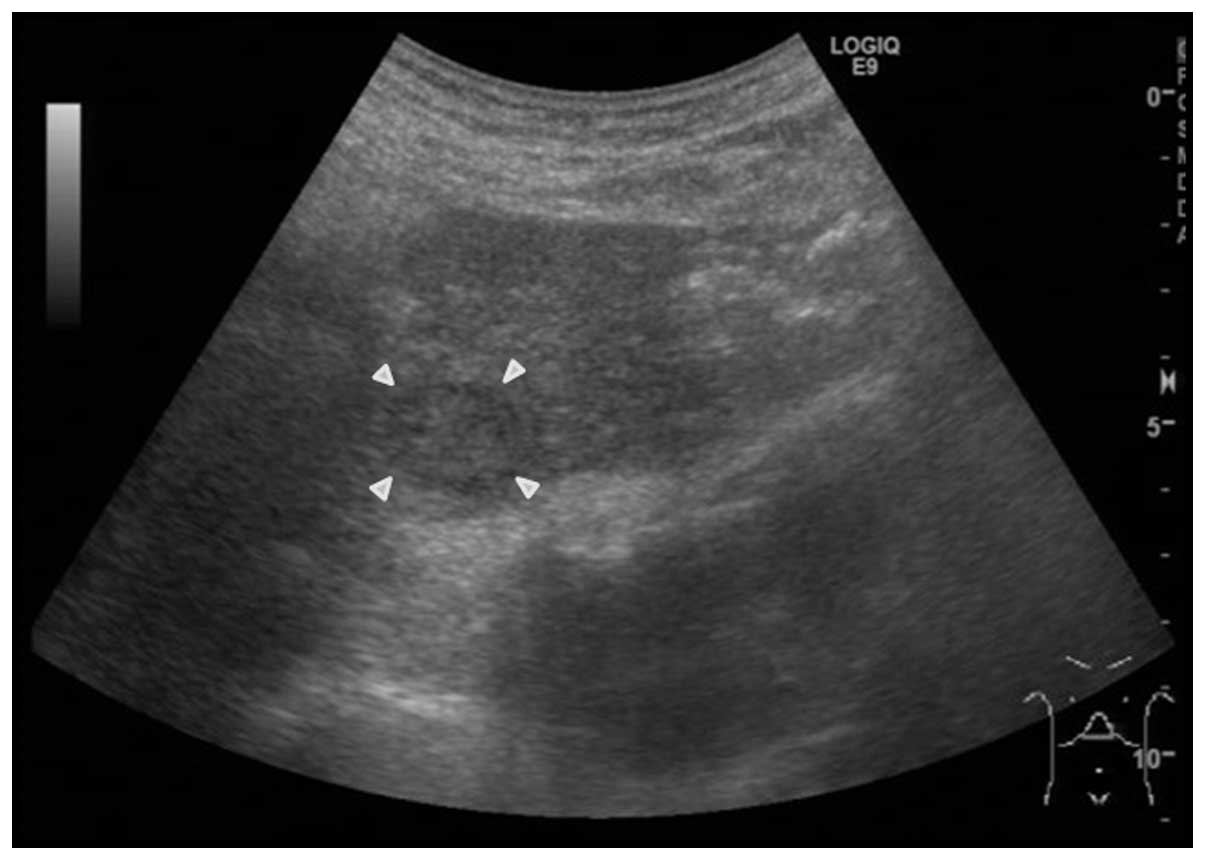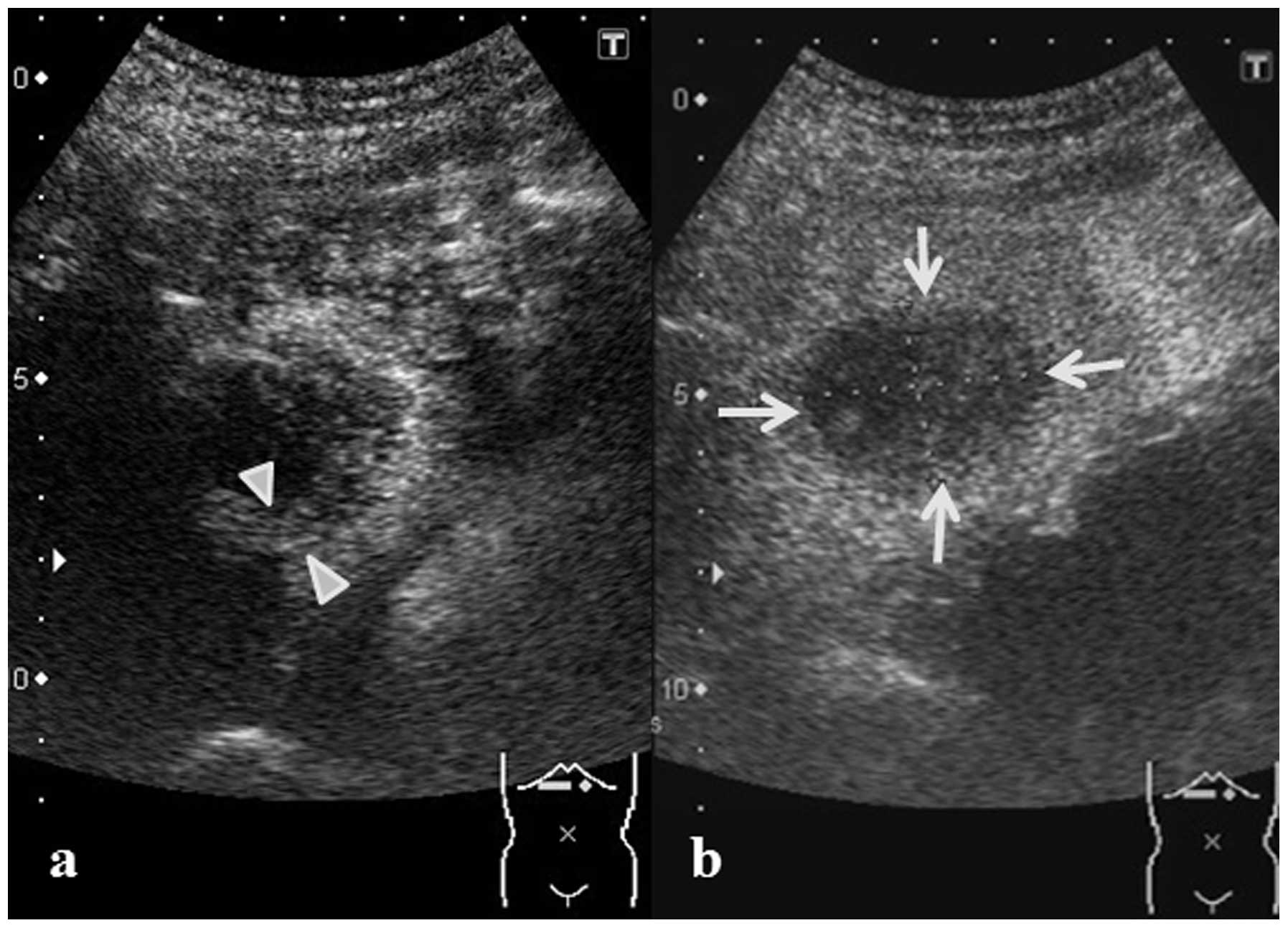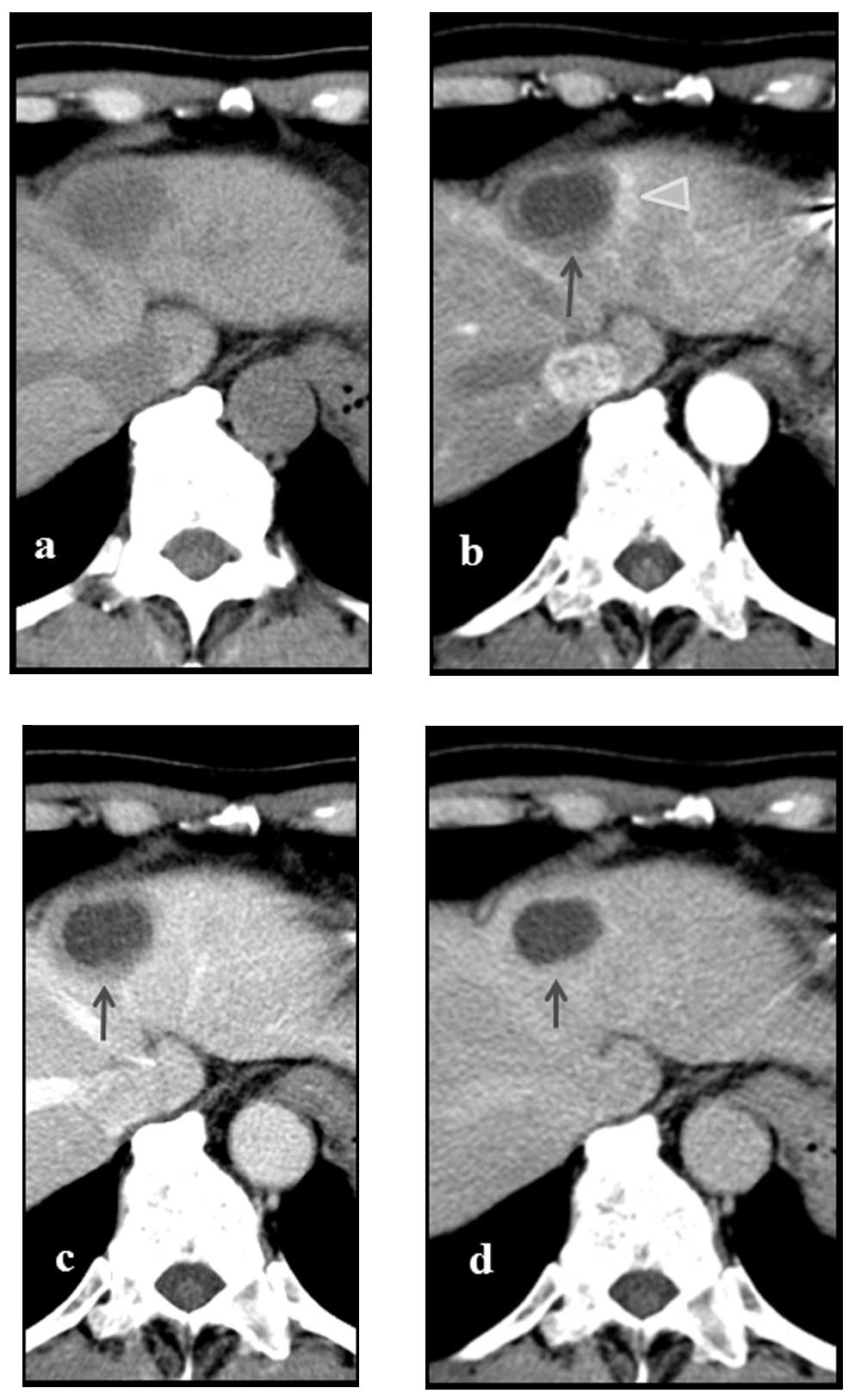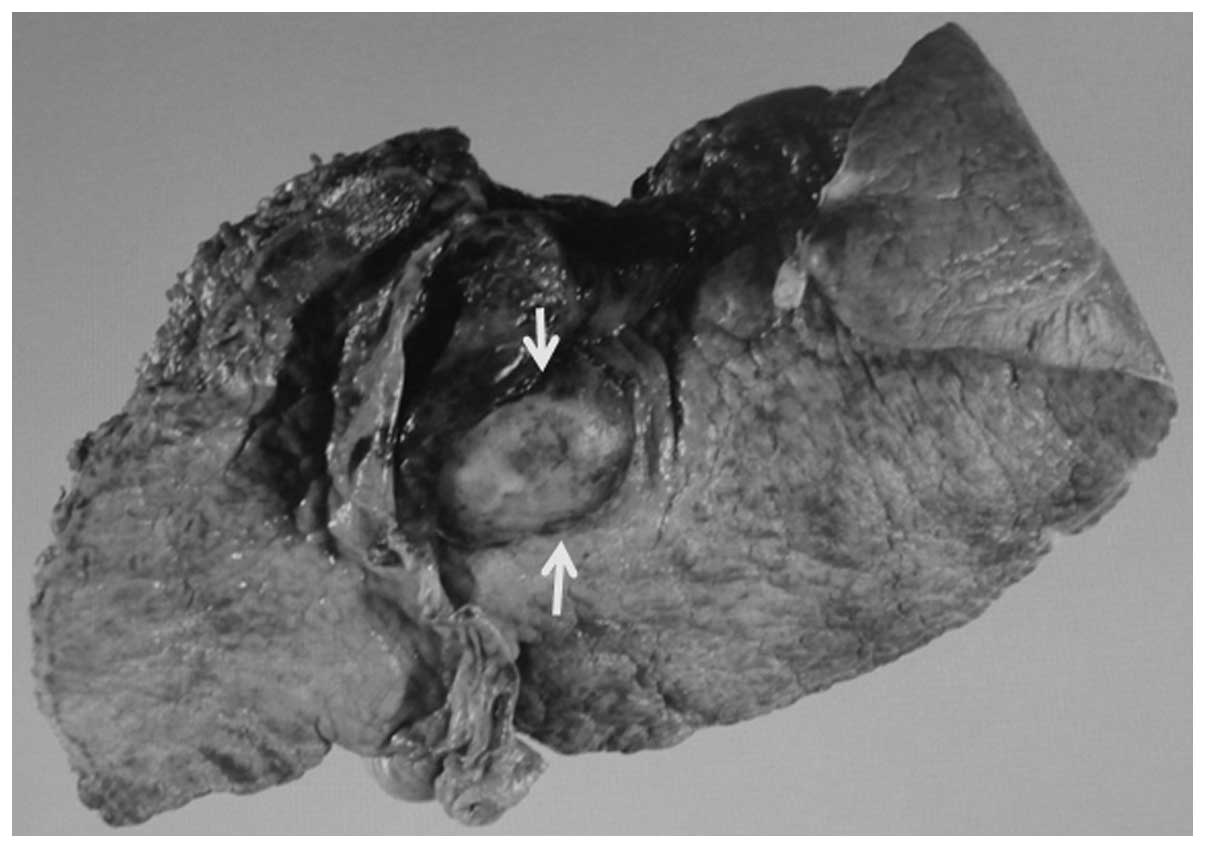Spontaneous complete necrosis of hepatocellular carcinoma: A case report and review of the literature
- Authors:
- Published online on: February 5, 2015 https://doi.org/10.3892/ol.2015.2937
- Pages: 1520-1526
-
Copyright: © Takeda et al. This is an open access article distributed under the terms of Creative Commons Attribution License.
Metrics: Total
Views: 0 (Spandidos Publications: | PMC Statistics: )
Total PDF Downloads: 0 (Spandidos Publications: | PMC Statistics: )
Abstract
The present study reports the case of a 68‑year‑old male patient who presented to Tokyo Rosai Hospital for the treatment of alcoholic liver disease. A high density was observed in liver segment S2, while a tumor, 30 mm in size, exhibiting a low density was observed in the delayed phase upon contrast‑enhanced computed tomography (CT), which was performed prior to admission. The tumor appeared slightly poorly defined upon abdominal ultrasound and was observed as a 30 mm low‑echoic nodule that was internally heterogeneous. A 5‑mm thick contrast enhancement effect was observed in the tumor border in the vascular phase on Sonazoid contrast‑enhanced ultrasonography, while a defect in the entire tumor was observed in the post‑vascular phase. Dysphagia had commenced three months prior to presentation and a weight loss of ~3 kg was observed. Therefore, the patient was admitted to Tokyo Rosai Hospital due to the presence of a hepatic tumor, and to undergo a close inspection of the cause of the tumor. Upon close inspection, it was determined that the weight loss and aphagia were caused by progressive bulbar paralysis. A contrast‑enhanced CT was performed on post‑admission day 29 as a follow‑up regarding the hepatic tumor. As a result, although no change in the tumor size was observed, the contrast enhancement in the tumor borderline had disappeared. Necrosis of the tumor was considered. However, as viable persistence of the malignant tumor could not be excluded, a hepatic left lobe excision was performed. The patient was diagnosed with hepatocellular carcinoma (HCC) based on the morphology of the cellular necrosis. In addition, occlusion due to thrombus was observed within the blood vessels passing inside the fibrous capsule. It was hypothesized that the formation of a thick fibrous capsule and occlusion due to thrombus in the feeding vessel were possibly involved as the cause of complete spontaneous necrosis. Written informed consent was obtained from the patient.



